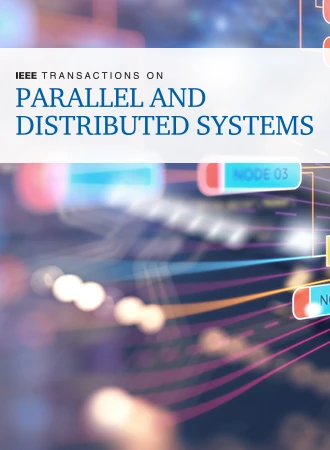具有多个服务质量目标的流计算中的贝叶斯驱动自动扩展
IF 6
2区 计算机科学
Q1 COMPUTER SCIENCE, THEORY & METHODS
IEEE Transactions on Parallel and Distributed Systems
Pub Date : 2024-03-13
DOI:10.1109/TPDS.2024.3399834
引用次数: 0
摘要
流处理系统通常采用自动缩放技术来确保资源效率和服务质量(QoS)。现有的自动缩放解决方案缺乏资源分配的准确性,因为它们依赖于静态的 QoS 资源模型,而这种模型无法考虑工作负载的高变化性,并且使用的是具有大量干扰信息的间接指标。此外,不同类型的 QoS 指标具有不同的特性,因此需要不同的自动缩放方法。在本文中,我们为操作员级并行性配置提出了一种多功能自动缩放解决方案,称为 AuTraScale+,以满足吞吐量、处理时间延迟和事件时间延迟目标。AuTraScale+ 采用贝叶斯优化框架做出扩展决策。首先,它使用高斯过程模型来消除不确定因素对性能模型准确性的负面影响。其次,它利用基于预期改进(EI)的获取函数,快速搜索并推荐最佳配置。此外,为了在新模型尚未准备就绪时做出更准确的扩展决策,AuTraScale+ 提出了一种迁移学习算法,在现有模型的基础上以新的速率估算所有配置的优势,然后推荐最优配置。我们在 Flink 平台上实现并评估了 AuTraScale+。在三个具有代表性的工作负载上的实验结果表明,与最先进的方法相比,AuTraScale+ 可以在缩放和放大场景中分别减少 66.6% 和 36.7% 的资源消耗,同时实现吞吐量和处理时间延迟目标。与其他优化事件时间延迟的方法相比,AuTraScale+ 平均可节省 26.9% 的资源。本文章由计算机程序翻译,如有差异,请以英文原文为准。
Bayesian-Driven Automated Scaling in Stream Computing With Multiple QoS Targets
Stream processing systems commonly work with auto-scaling to ensure resource efficiency and quality of service (QoS). Existing auto-scaling solutions lack accuracy in resource allocation because they rely on static QoS-resource models that fail to account for high workload variability and use indirect metrics with much distractive information. Moreover, different types of QoS metrics present different characteristics and thus need individual auto-scaling methods. In this paper, we propose a versatile auto-scaling solution for operator-level parallelism configuration, called AuTraScale+, to meet the throughput, processing-time latency, and event-time latency targets. AuTraScale+ follows the Bayesian optimization framework to make scaling decisions. First, it uses the Gaussian process model to eliminate the negative influence of uncertain factors on the performance model accuracy. Second, it leverages the expected improvement-based (EI-based) acquisition function to search and recommend the optimal configuration quickly. Besides, to make a more accurate scaling decision when the new model is not ready, AuTraScale+ proposes a transfer learning algorithm to estimate the benefits of all configurations at a new rate based on existing models and then recommend the optimal one. We implement and evaluate AuTraScale+ on the Flink platform. The experimental results on three representative workloads demonstrate that compared with the state-of-the-art methods, AuTraScale+ can reduce 66.6% and 36.7% resource consumption, respectively, in the scale-down and scale-up scenarios while achieving their throughput and processing-time latency targets. Compared with other methods of optimizing event-time latency, AuTraScale+ saves 26.9% of resources on average.
求助全文
通过发布文献求助,成功后即可免费获取论文全文。
去求助
来源期刊

IEEE Transactions on Parallel and Distributed Systems
工程技术-工程:电子与电气
CiteScore
11.00
自引率
9.40%
发文量
281
审稿时长
5.6 months
期刊介绍:
IEEE Transactions on Parallel and Distributed Systems (TPDS) is published monthly. It publishes a range of papers, comments on previously published papers, and survey articles that deal with the parallel and distributed systems research areas of current importance to our readers. Particular areas of interest include, but are not limited to:
a) Parallel and distributed algorithms, focusing on topics such as: models of computation; numerical, combinatorial, and data-intensive parallel algorithms, scalability of algorithms and data structures for parallel and distributed systems, communication and synchronization protocols, network algorithms, scheduling, and load balancing.
b) Applications of parallel and distributed computing, including computational and data-enabled science and engineering, big data applications, parallel crowd sourcing, large-scale social network analysis, management of big data, cloud and grid computing, scientific and biomedical applications, mobile computing, and cyber-physical systems.
c) Parallel and distributed architectures, including architectures for instruction-level and thread-level parallelism; design, analysis, implementation, fault resilience and performance measurements of multiple-processor systems; multicore processors, heterogeneous many-core systems; petascale and exascale systems designs; novel big data architectures; special purpose architectures, including graphics processors, signal processors, network processors, media accelerators, and other special purpose processors and accelerators; impact of technology on architecture; network and interconnect architectures; parallel I/O and storage systems; architecture of the memory hierarchy; power-efficient and green computing architectures; dependable architectures; and performance modeling and evaluation.
d) Parallel and distributed software, including parallel and multicore programming languages and compilers, runtime systems, operating systems, Internet computing and web services, resource management including green computing, middleware for grids, clouds, and data centers, libraries, performance modeling and evaluation, parallel programming paradigms, and programming environments and tools.
 求助内容:
求助内容: 应助结果提醒方式:
应助结果提醒方式:


